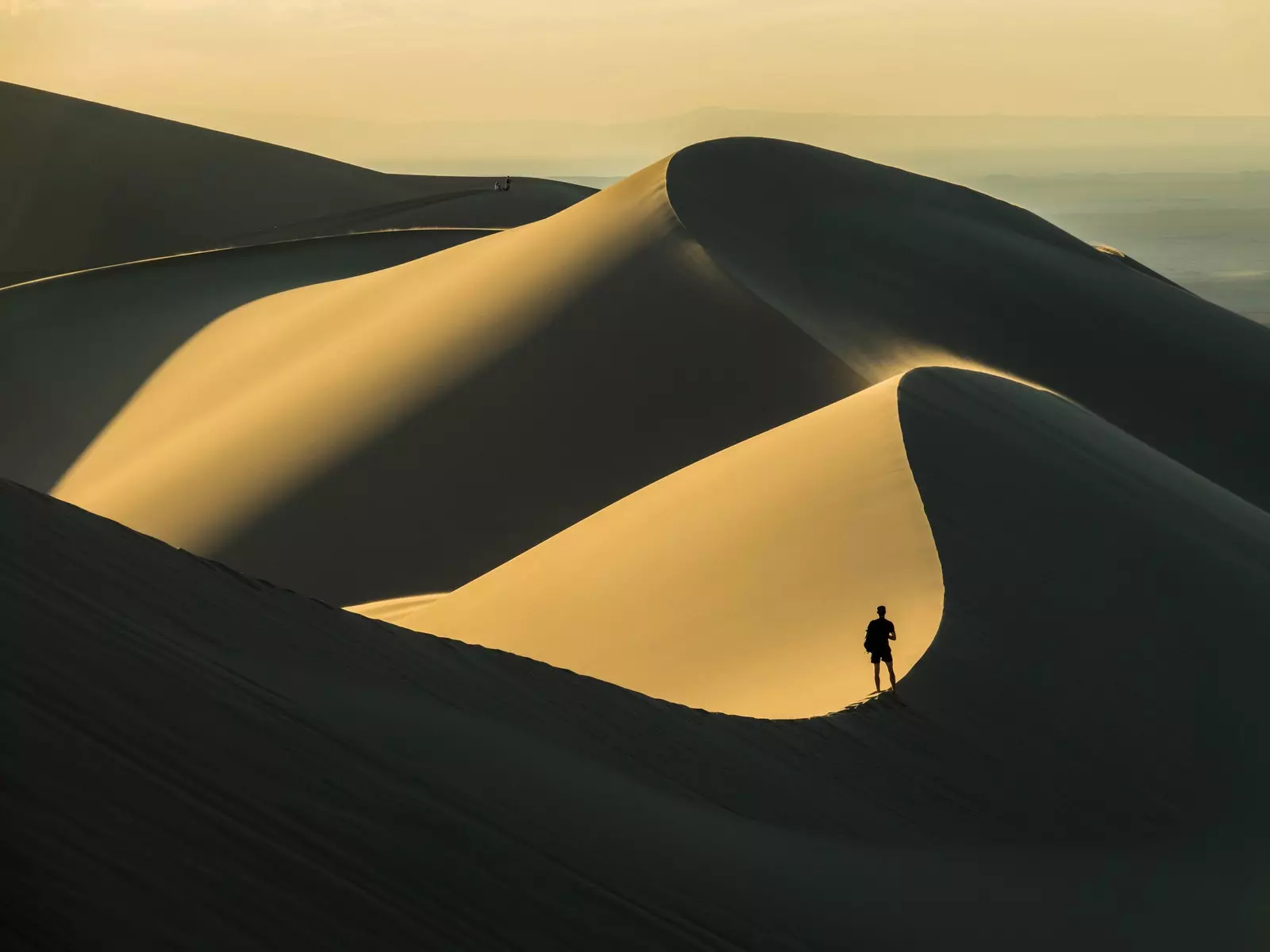
gobi desert
The Trans-Mongolian route crosses the Gobi desert, one of the largest on earth , but this time, loaded with water, gasoline and other provisions; we traveled by van . We want to delve into its most remote corners and enjoy the changes in landscape from Ulaanbaatar to the south of the country . And so it is, during the steep road, which seems to lead nowhere, we see how the landscape is gradually changing: mountains, steppes, extensive plateaus... and already in the desert: valleys, canyons, dunes...
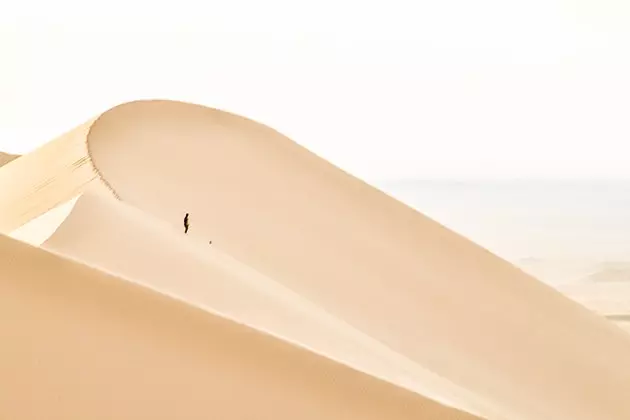
Largest dunes in the Gobi desert
The chosen itinerary gives us a different sunrise every day:
The first night we stayed in our first nomadic camp 300 kilometers from the capital of Mongolia, in an endless green steppe near the village Erdenedala (Sangiyn) .
The next morning, about 170 kilometers take us to Sayhan-Oyoo, where a small river, next to the ongi temple , welcomes us. We discover the ruins of what was the largest Buddhist monastery in Mongolia. In the 18th century, Ongi had 28 temples in which 1,000 monks lived, but after its destruction by Soviet troops in the 1930s, there is only one building left standing guarded by three monks.
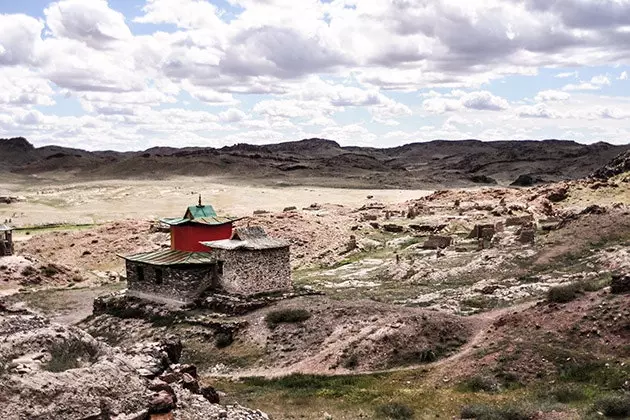
Ongi Monastery
Another day and 250 kilometers more to let ourselves be captivated by the red cliffs of Bayandzag, also known as Flamming Cliffs . The area is famous for having found fossil remains and dinosaur eggs.
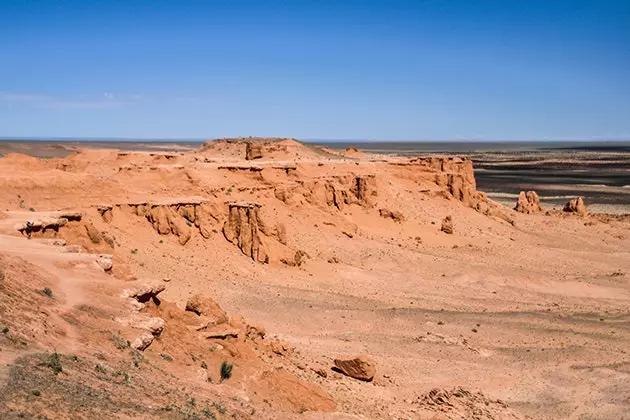
Cliffs of Flaming Cliffs
On the fourth day we woke up in Duutmanhan, along with dozens of camels. In the background, the longest dunes in the Gobi desert. After a camel ride to the base of the highest dune, we climb to its top to enjoy a spectacular sunset.
200 kilometers away, the Yolyn Am canyon awaits us. This unique gorge is characterized by keeping ice in one of its areas all year round. Tsagaan Suvaga, 180 kilometers from Yolyn Am, is the last stop . The White Stupa is a capricious relief that was caused by the sedimentation of ancient sporadic lakes.
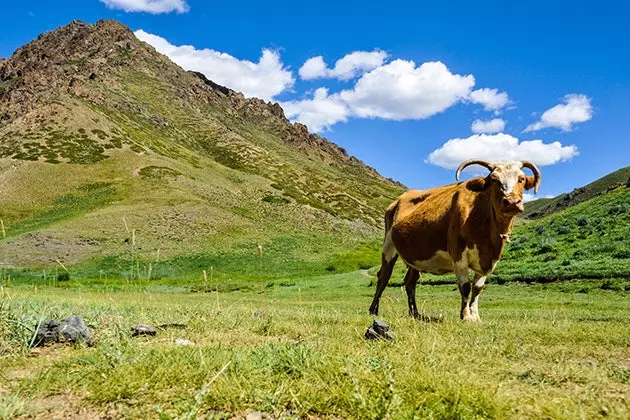
We can't help but marvel
days are intense . We get into the van early, drive for miles on the invisible desert roads, eat in a village along the way, and return to the van until we reach our destination for the day. nights are haunting . Temperatures drop quite a bit in some areas of the desert and the darkness surprises with all kinds of animal sounds, such as howling wolves . We slept, with our three traveling companions, in one of the yurts of the camp lost in the immensity of the terrain.
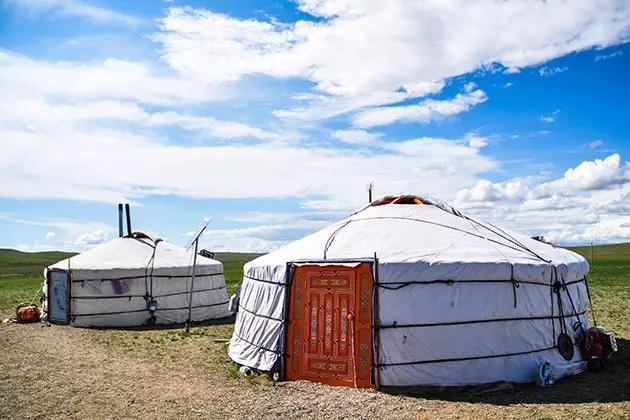
Yurts in a nomadic camp
The yurt or ger is the white, circular tent used by nomads in Central Asia since the time of Genghis Khan's empire. Today, 30% of Mongolia's population is nomadic, moving four times a year, once for each change of season , in search of pasture for cattle. Modern yurts are made of colorful woods, cotton, and plastic; and are disassembled in 4 or 5 hours. They do not have electricity or running water, so they distance us from conventional tourism immersing ourselves in the true nomadic experience.
Different families welcome us every day in their manager's room. , which is both your bedroom and, in many cases, the kitchen. There begins the ritual of welcome. The patriarch offers us a bowl of fermented mare's milk and carefully shares a small jar of powdered tobacco to snort. . After cleaning up as best we can, it's time for dinner and in the main yurt, we are served huge trays of lamb. For dessert, glasses of a curiously named vodka Long live Mongolia! They parade through the room.
It is the last night of the trip and, together with our new friends, we recall with laughter the most anecdotal moments . I leave the ger to contemplate the last Mongolian sky. Countless stars maintain a fight to shine more than the rest. In the midst of silence the sound of the Trans-Siberian is reproduced in my head in search of new stations . And, there on the horizon, the depth of the desert brings me back at last, the essence of travel .
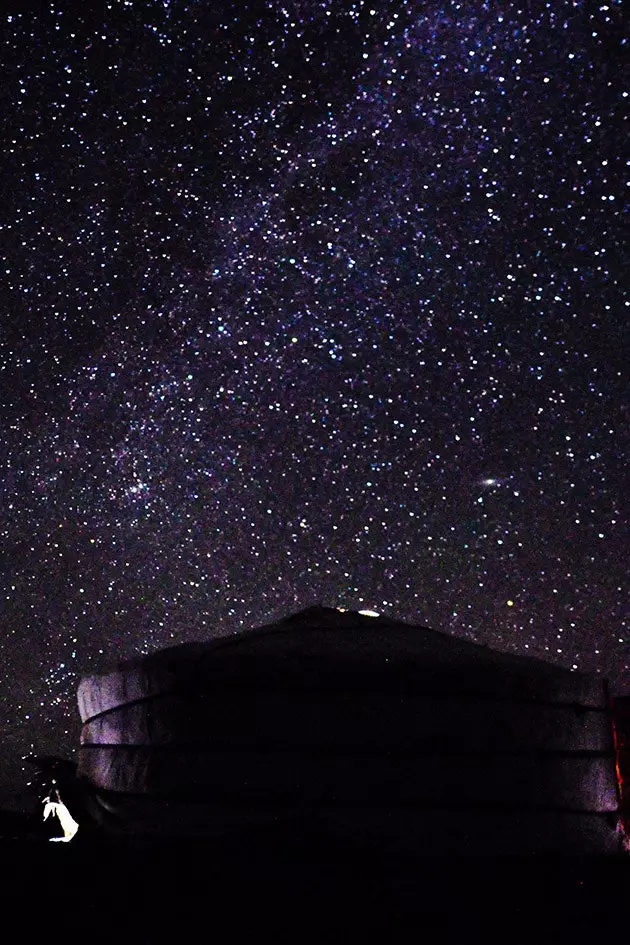
So are the nights in the desert
